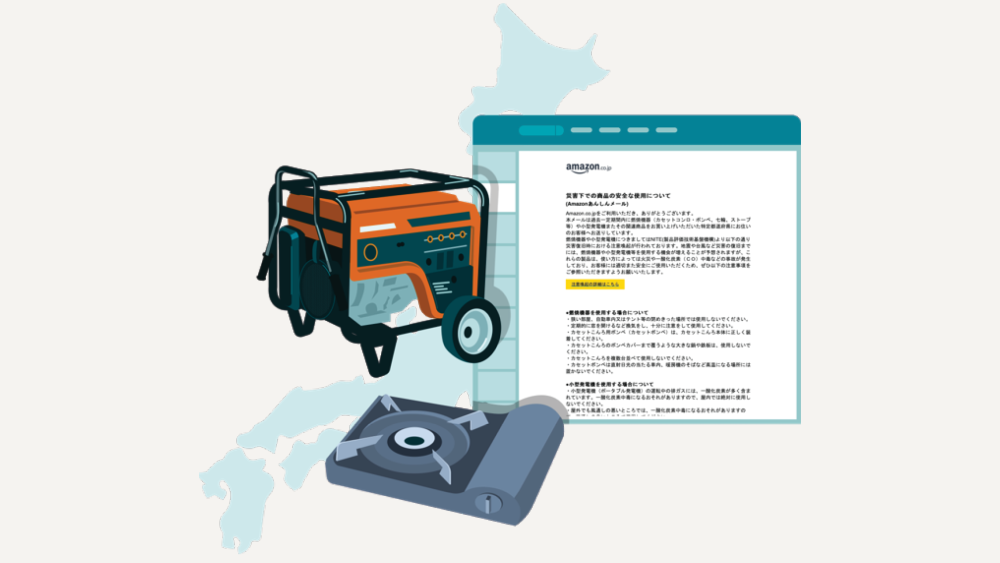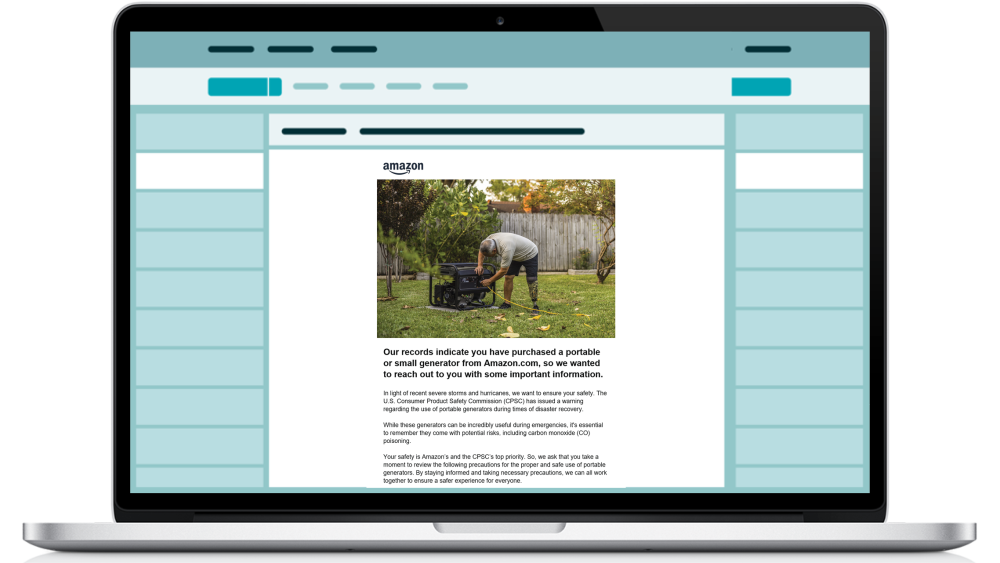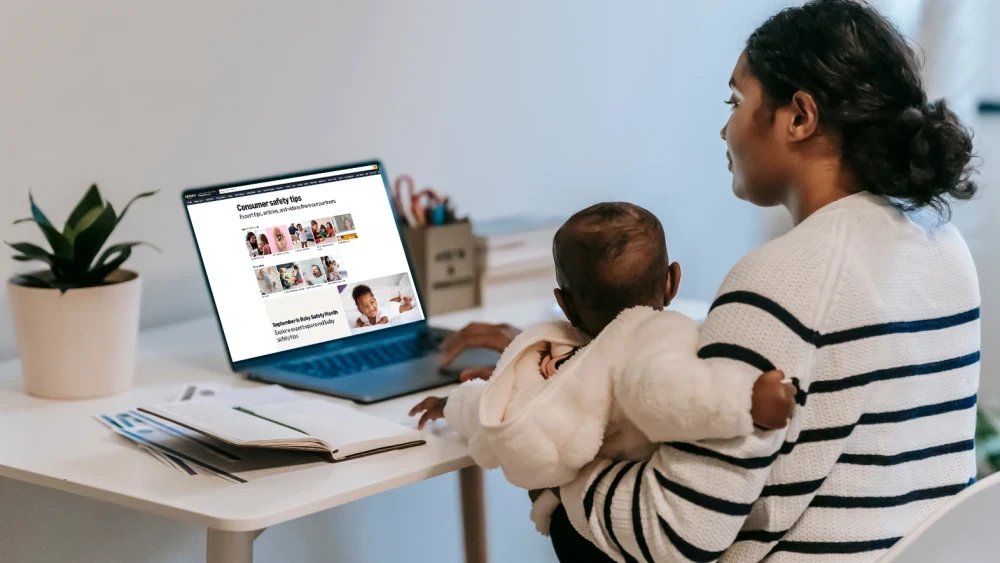On January 1, 2024, a 7.5 magnitude earthquake hit the Noto Peninsula in Ishikawa Prefecture in Japan, the strongest to hit the area since 1885. Just two hours after the mainshock, more than 16,000 Amazon customers living in the impacted area who recently purchased power generators and portable gas cookers received an email from Amazon with tips on how to safely use their products from Japan’s National Institute of Technology and Evaluation (NITE). Power generators and portable gas cookers are commonly used after natural disasters and can be dangerous to consumers if not used properly. Making this safety information readily available can help consumers find the safety information they need, quickly.
That email was sent as part of Amazon’s Anshin-Mail program, an initiative started in Japan in 2017. Anshin (安心) means peace of mind, or reassurance, in Japanese. Helping customers feel confident about using products safely was the inspiration for the new initiative. As of 2024, more than 250 million Anshin-Mail messages have been sent to customers across the country.
“Prior to launching the Anshin-Mail program in 2017, our focus was on sending customers information about product recalls,” said Kenichi Miura, head of Amazon’s Trustworthy Shopping Experience team in Japan and founder of the Anshin-Mail program. “We realized there was potential to have an even bigger impact by collaborating with regulators, and connecting the dots in our own data, to help amplify tips on safe usage from safety organizations. This is how the idea for Anshin-Mail was born.”
Anshin-Mail: The beginning of a new consumer education program
In 2017, Amazon customers in Japan who had purchased power banks received an email advising not to leave the charging devices unattended or use them near flammable objects because of fire risk. The email, sent in collaboration with NITE, went out to more than 225,000 customers.
This email marked the beginning of the Anshin-Mail pilot program, a test to see how product safety messages would resonate with customers. After the initial email, more messages with NITE-provided safety information for electric heaters and bed guards were sent within the program’s first year. From there, the Amazon team began sending emails to customers who purchased not just one, but a combination of different products in a certain timeframe. For example, customers in Japan who purchased baby products and honey received an email from Amazon in 2018 warning about the dangers of honey and infant botulism. The email garnered attention online, with some customers sharing screenshots of the message and what they ordered.
“I’m impressed by this email from Amazon,” said one customer alongside a screenshot of the email they received. “I bought honey on Amazon Fresh and diapers on Prime Now. I’m thankful that Amazon identified and sent me the safety message … I appreciate the warning.” The post resonated with other users on X, receiving more than 25,000 retweets, comments, and likes.
As the program grew, so did the collaborations with safety organizations across the public and private sector. Alongside NITE, Tokyo Fire Department, National Consumer Affairs Center of Japan, Japan Coast Guard, Ministry of the Environment, and other Japan-based safety organizations, Amazon soon expanded Anshin-Mail to include more than 50 product types and four categories of proactive messages.
Short-term messages are sent within one month after a customer makes a purchase, sending safety information for products like power banks and bed guards. Long-term messages are sent to customers ten years post-purchase and contain safety information for products that can become unsafe after long-term use. Customers who buy a mix of different products, like honey and baby products or ladders and senior products, may receive emails with information relevant to their unique situations, like being a new parent. The final category is reserved for products that people use most after disasters, and include reminders on how to use these products safely. Products for these messages are chosen based on what regulators and safety organizations publish public alerts about, featuring tips from the experts themselves.
“Amazon’s goal for these messages is not to over-communicate or send excessive warnings to customers,” Miura said. “But we can use our channels to amplify important safety messages from the safety organizations we collaborate with and connect customers with useful tips.”
Beyond Anshin-Mail: Expanding the reach of post-purchase product safety information around the world
Amazon’s unique ability to reach consumers allows safety experts to amplify the reach of product safety information. These collaborations have become an important part of our approach to consumer education not just in Japan, but around the world.
In the summer of 2024, when three separate severe weather events impacted Texas and Florida, more than 10,000 Amazon customers who purchased portable power generators in the six months prior received an email from Amazon with safety tips from the U.S. Consumer Product Safety Commission (CPSC). Within the email was information about why you should use generators outside only, how to install battery-operated carbon monoxide alarms, and how to detect symptoms of carbon monoxide poisoning.
For Amazon customers who purchase certain baby products in the U.S., UK, and Canada, post-purchase emails covering to topics like baby safe sleep, furniture anchoring, and button batteries are sent in collaboration with the Juvenile Products Manufacturers Association (JPMA), the National Highway Traffic Safety Administration (NHTSA), Safe Kids Worldwide, Charlie’s House, Royal Society for the Prevention of Accidents, Electrical Safety First, and the Child Accident Prevention Trust. These safety-organization-provided tips can also be found throughout the shopping experience, integrated onto product pages and our Consumer Safety Tips site.
The evolution of the Anshin-Mail program reflects Amazon’s ongoing commitment to working across the public and private sector to make the world a safer place for consumers no matter where they shop. What started in 2017 as a test has turned into a program that reaches consumers around the world with information from safety organizations at times when they may need it most.
To learn more about Amazon’s approach to product safety, visit our Product Safety page.



